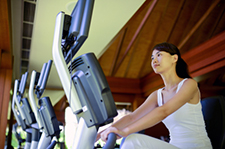There’s a particular kind of frustration that all business owners have experienced: You spend time and money searching for the perfect employee. You make a promising hire, invest valuable resources in training, and finally breathe a sigh of relief — and then your employee moves on. So how do you fill positions and keep them filled?
At fitness centers and sports facilities, certain positions are especially hard to keep staffed. Over on the IHRSA blog, three fitness/sports center owners recently answered questions about the positions they’ve repeatedly had difficulty filling. For Telos Fitness Center in Dallas, Texas, the trickiest position is the front desk. “By nature, [it’s] entry-level and offers competitive, but minimal, hourly pay and ‘front line’ responsibilities,” says Brent Darden, the center’s owner/general manager. At Riverside Health Club in Mount Vernon, Washington, owner Karen Westra has found the facilities manager position most challenging to fill. Joe Cabibbo, owner and general manager of Odyssey Athletic Center in Waldwick, New Jersey, struggles with personal trainers leaving because they lack skills to market their services.
Whatever position you struggle to keep properly staffed at your own facility, there are some general steps you can take to improve the situation. First, take the time to analyze all of the tasks that the position in question is responsible for. You might find that you’re consistently hiring people with the wrong experience, or that the tasks can be split between two positions, making it easier to keep the troublesome one filled. That’s what Westra discovered when she sat down and listed out everything a facilities manager would have to do in order to keep up with preventative maintenance demands at her club. The solution? Hire a facilities assistant, and consult regularly with the facilities manager about which tasks can be delegated.
Next, rather than investing resources in a particular individual, invest in systems and training. This approach works for Darden with the font desk job. “We have found the best solution is to invest heavily in the systems and training of front desk staff in order to maintain consistent service, despite frequent turnover,” he says. In other words, even if you have to make a new hire for the front desk position, or any position, every six or nine months, having seamless systems in place and a rigorous training program will ensure that members’ day-to-day experience doesn’t change much.
Finally, for personal trainer positions or similar ones that require self-promotion, make sure your hires are equipped to engage in self-promotion. As Cabibbo puts it, “Regardless of the extent of their certification, personal trainers seem to have difficulty applying their knowledge in a marketing/sales aspect.” Where certification programs fail, you might have to be prepared to teach. Keep your coaches, personal trainers, and perhaps other employees up-to-speed on the best ways to attract and keep clients. You’re the one who will benefit in the end, because you won’t have to worry about replacing the employees who aren’t keeping themselves busy enough.




